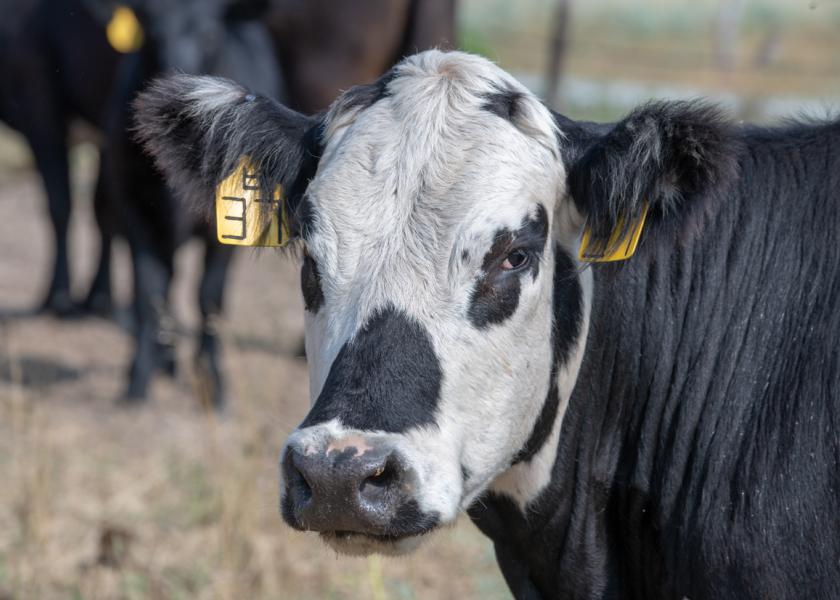Feeding Cows While Coping with Drought and High Input Costs

Drought conditions influenced forage and grain production for nearly two years. Forage and grain yields are expected to be somewhere between 1/3 and ½ of normal. Pasture yield is also low or already out. Feeding and managing cows while coping with these conditions is a challenge complicated further by costs associated with feed delivery. Cow-calf producers must incorporate three considerations that greatly affect cow feeding costs under current economic conditions: feeding group size, energy density of feed and fuel cost.
Feeds (or mixed diets) that require extensive preparation time (loading, grinding, mixing, and delivering) will create additional feeding costs not generally considered in least cost ration formulation. Diesel price at $4.50/gallon and fuel use of 4 gallons/hour determine hourly cost of using a tractor to prepare and deliver feed at $18/hour. For an operation running diesel-fueled equipment for one hour to feed a group of 50 cattle under these conditions, the daily fuel cost alone would be $0.36/cow. Grouping cows or growing cattle in larger groups to maximize feed delivery over groups to feed is an additional consideration under current economic conditions.
Energy density of the feed ingredient selected is directly proportional to its volume. A full bucket on a 6-foot skid steer contains 800 lb of grain but fewer than 200 lb of hay. Loading 800 lb of hay will require four times the amount of movement (time) than loading 800 lb of corn.
Energy density of the feed ingredient selected also determines daily feeding cost. A bushel of corn grain is currently selling for $7.50 ($13.39/cwt) while a ton of hay may be purchased anywhere from $130 to $200/ton. Assuming a producer would purchase hay at $150 ($7.50/cwt) containing 15% moisture and 55% total digestible nutrients (TDN), the cost per unit of TDN would be $320/ton ($16.04/cwt). A ton of TDN from $7.50-per-bushel corn would be $346 ($17.29/cwt) considering corn grain contains 12% moisture and 88% TDN. If the TDN requirement of a cow is 15 lb/day and using feed price examples described above, the daily requirement may be met using 27 lb of hay ($2.41/cow) or 17 lb of corn grain ($2.59/cow). As already proposed, the difference, $0.18/cow, may be lost if feeding equipment (tractor or tractor and mixer) must run for an additional 30 minutes while feeding hay.
Cow-calf operators are not used to feeding high-energy diets to cows. Choosing to reduce fuel and feed costs by opting to feed high-energy diets requires some preparation. Feeding from 2 to 4 lb of hay is also recommended to manage intake and prevent grain engorgement.
Protein requirements of mature beef cows, although low, require that, once diets are formulated, dietary protein concentration is evaluated to determine if it meets requirements. A minimum of 8% is required by mature cows that just weaned a calf to as much as 12% for lactating cows. Incorporating a high-protein co-product, such as distillers grains and solubles, is one way to properly balance the metabolizable and degradable protein requirements of cows, particularly young cows, while reducing the amount of starch cows are expected to consume.
Although mixing equipment may not be necessary, allocating at least 12 to 18 inches of space per cow on the feeding trough or space is required to prevent overeating by boss cows. Cows expected to consume 10 to 15 lb of corn grain daily may be able to ingest this amount in fewer than 3 hours. Delivering hay in a round bale feeder within a fenced area and then restricting access to this area to less than 4 hours daily would eliminate the need to deliver hay daily in a bunk or rolled out on the ground.
Cow-calf operators are advised to work with their nutritionist to evaluate alternative energy-dense feed sources and to develop diet and dietary management plans to reduce feed and feeding costs.







